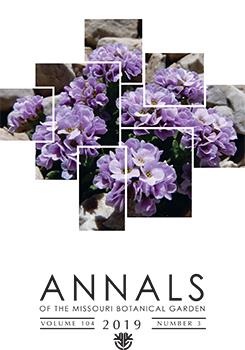Elaphoglossum Schott ex J. Sm. sect. Polytrichia Christ is characterized by the presence of subulate scales and the absence of hydathodes. We did a molecular phylogenetic analysis using three non-coding plastid markers and found that five species thought to belong to section Elaphoglossum are actually members of section Polytrichia. The five species were previously thought to belong to section Elaphoglossum because they lack the characteristic subulate scales of section Polytrichia. We refer to these species as the Decursivum Group. We assign two other species to this group based on their morphological similarity to the known members of the group. Besides lacking subulate scales on the laminae, the seven species of the Decursivum Group are distinctive by having a submarginal connecting vein, a character otherwise absent in section Polytrichia. The group is entirely Neotropical, occurring at middle elevations and extending from the West Indies and Mexico to Bolivia and southeastern Brazil. For the Decursivum Group, we provide a taxonomic treatment including a key, descriptions, illustrations, distribution maps, discussion, and lists of specimens examined. Lectotypes are designated for Acrostichum miersii Baker and A. papyraceum Fée. A new species from the Andes, E. vascoae F. B. Matos & R. C. Moran, is described and illustrated.
How to translate text using browser tools
26 August 2019
The Decursivum Group of Elaphoglossum sect. Polytrichia (Dryopteridaceae): Nonsubulate Species Nested in an Otherwise Subulatescaled Clade
Fernando B. Matos,
Paulo H. Labiak,
Robbin C. Moran
ACCESS THE FULL ARTICLE
Bolbitidoid
Dryopteridaceae
Elaphoglossum
ferns
Neotropics
new species
phylogeny





